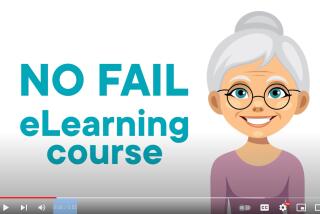Judge Orders State to Let Disabled Students Use Aids on Exit Exam
- Share via
A federal judge Thursday ordered California to accommodate disabled students who take the high school exit exam and to provide some students with an alternative assessment.
“Overall, we’re pleased with the ruling,” said Doug Stone of the state Department of Education. “The key thing for us is that we have a green light to go ahead and administer the test.”
U.S. District Judge Charles Breyer did not halt the testing altogether, as advocates for the disabled had requested, but he did require students to be allowed to use calculators, spell-checking devices and, if needed, have the tests read to them. He also ordered the state to devise a different test or assessment method for students who are too disabled to take the exam.
The Disability Rights Advocates, an Oakland-based nonprofit group that filed the lawsuit against the State Board of Education, had claimed that the test discriminated against those students by not allowing them to use calculators or aids to read material while taking the exit exam, unless they obtained waivers from the state.
Stone said the state has no problem with allowing students to take the test with accommodations. The only difference now is that “based on the judge’s ruling, we can’t deny any waivers,” and a small percentage of students will be exempt from taking the test, he said.
“We’re already looking at ways in which we can assess or evaluate kids with special needs,” Stone said. “We’re pleased that this test is going forward as planned. This provides us with a significant opportunity to continue to get additional data so that we’re in a better position to assess how kids are faring on this high-stakes exam.”
Under state law, all students must pass the exam to graduate, beginning with the class of 2004.
The state will begin administering the tests to sophomores next month. Last year, the state offered the exams, but a failing grade did not count against students.
More than 90% of disabled students failed the math section and 82% failed the language portion. The failure rate for students not disabled was half as large.
Each of California’s 45,000 disabled sophomores who will begin taking the test next month has an Individual Education Plan that explains what type of accommodations can be used for in-class exams and assignments. Thursday’s ruling allows those same accommodations for the exit exam.
More to Read
Sign up for Essential California
The most important California stories and recommendations in your inbox every morning.
You may occasionally receive promotional content from the Los Angeles Times.










